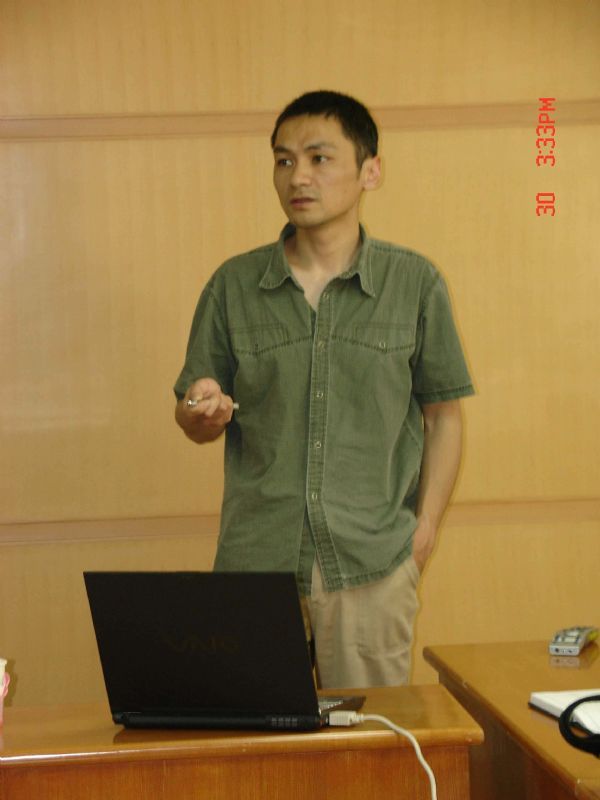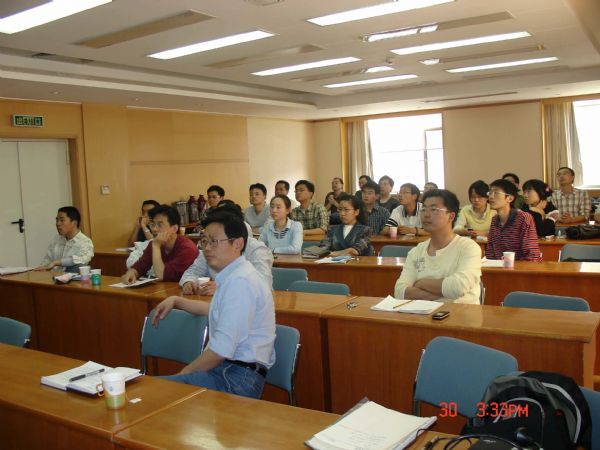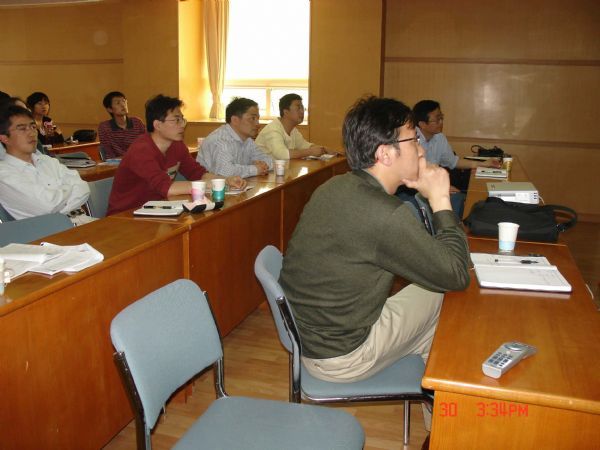
(From CHANG Daoqing of Communication Acoustics Laboratory) On Apr.29, Associate Prof. Wei Dai from CAS Technical Institute of Physics and Chemistry was invited to IACAS to give report titled "A symphony of acoustics, thermodynamics, heat transfer and fluid mechanics". Wei Dai studied refrigeration and cryogenics at Shanghai Jiao Tong University and received his Doctor degree in 2000. Then he went on his postdoctoral research on pulse tube refrigerator at Japanese University from 2001 to 2002. Since 2003 he joined in CAS Technical Institute of Physics and Chemistry, where his focused his attention on basic theory and application technology of thermoacoustics, e.g. thermoacoustic refrigerators and engines.
The thermoacoustic effect involves the thermodynamic interaction between acoustic wave and contacted solid surfaces. These systems have attractive features and potential applications in many areas, especially for cooling purposes. Thermoacoustic refrigerators and engines are two important applications of the thermoacoustic phenomena. In the former, heat is pumped from a low temperature heat source to an ambient heat source by consuming mechanical work from an acoustic wave. In the latter, acoustic work is generated from a high temperature heat source. Thus, the combination of the two technologies gives birth to a new type of refrigerators with no moving components.
The thermoacoustics is a typical interdisciplinary subject which includes the nonequilibrium thermodynamics, heat transfer, hydrodynamics and modern acoustics. Among the self-oscillation also implicates the nonlinear acoustics. The research results have very significant theoretical and practical value.
Associate Prof. Wei Dai's report consisted of three parts, as following:
1.The basic theory of themoacoustic effect;
2.The history and recent developments of thermoacoustics;
3.The typical nonlinear acoustics in the thermoacoustic system, the CFD simulation and the PIV measurement.




